Space

Educators and Parents, Sign Up for The Cheat Sheet
Weekly updates to help you use Science News Explores in the learning environment
Thank you for signing up!
There was a problem signing you up.
-
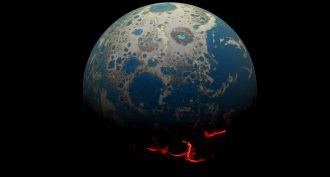 Earth
EarthMeteorites likely wiped out Earth’s earliest life
Enormous meteorites appear to have slammed into Earth several times early in its history. Each mega-smashup would have boiled off oceans and obliterated any bit of life.
-
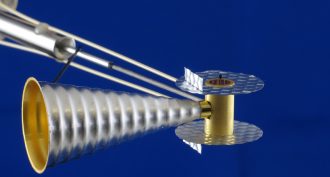 Physics
PhysicsSmooshed diamonds: A window into exoplanets?
Scientists have compressed diamonds more than ever before. Their carbon may give clues to what conditions might be like deep within planets way beyond our solar system.
-
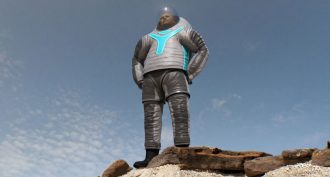 Space
SpaceWhat to wear on Mars
NASA released details of the new, more flexible apparel being designed for long-distance travelers — such as those bound for another planet.
By Andrew Grant -
 Space
SpaceMonster collision in space
The smashup of four clusters of galaxies has sent a super-hot jet of charged particles spewing 2.5 million light-years into space!
-
 Planets
PlanetsFirst mega-Earth found
Astronomers are puzzled by Kepler-10c. This exoplanet is rocky like Earth — but as massive as Neptune. And that challenges their accepted ideas about how planets form.
-
 Space
SpaceSun sibling spotted
Separated at birth: Astronomers find a star 110 light-years away. It was born at the same time as our sun and from the same cloud of gas and dust.
-
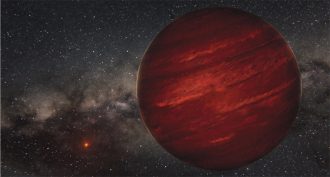 Planets
PlanetsDistant planet may boast the longest year
On a planet far, far away, a single pass around its sun may seem to last forever.
-
 Planets
PlanetsA ‘Goldilocks’ world?
Scientists have spotted a faraway planet that is nearly the size of Earth and could host liquid water. It's too far to visit, but astronomers say the galaxy could be littered with such potentially habitable worlds. Don't hang up yet, E.T.
-
 Space
SpaceFailed ‘star’ found in sun’s backyard
Astronomers have identified a failed star — or brown dwarf — right in our sun’s backyard. It doesn’t burn brightly. In fact, it doesn’t burn at all, which explains its downright frosty temperature.
By Janet Raloff -
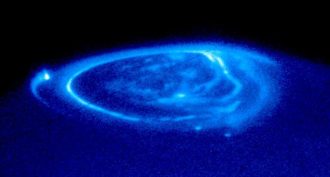 Planets
PlanetsHeavenly research
Groundbreaking research in astronomy landed four high school seniors spots as finalists in the 2014 Intel Science Talent Search.
By Sid Perkins -
 Space
SpaceDead star makes a lens for its companion
Much like the lens on a camera, the intense gravity of a newfound white dwarf bends light. In this case, it is distorting light emitted by the star it orbits.
-
 Chemistry
ChemistryUrine may make Mars travel possible
On Earth, urine is a waste. En route to Mars, it could be a precious renewable commodity: the source of drinking water and energy.